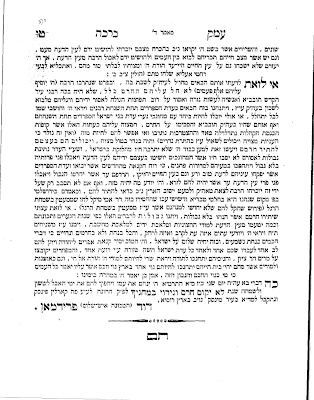 At the Kosel, many years ago. Photo courtesy of the LOC.
At the Kosel, many years ago. Photo courtesy of the LOC.If you ever read the "Heavenly City" series by Menachem Gerlitz - whether in English, Hebrew or
Yiddish - you're surely in the know when it comes to many of the battles that the
Yishuv haYoshon in the Holy Land fought. Be it forced conversions, lack of human and property rights or trying to prevent the ideas of
Haskoloh and modernity from penetrating their ranks. The way the community is portrayed is basically as one bloc, marching in lock step. All dressed the same, went to the same
chadorim and other than the fact that there were
Chassidim and
Prushim who
davened in different
shuls and belonged to different "
kollelim," were all the same cookie-cutter Jews. More or less. While that may be mostly true there
were differences of opinion. In the circles of the
Eda HaCharedis they commemorate to this very day the ban that was placed by the
Rabbonei Yerushalayim on the teaching of foreign languages. I cannot remember when that ban was imposed, but it may have been as far back as in the times of
Reb Shua Leib Diskin. They have this gathering in
Kikar HaShabbos and all the
chadorim that subscribe to the ban attend en masse. Of course, only
Chadorim that are
Yiddish only attend that gathering, since
Ivrit - I guess - is included in the foreign language list. The French "Alliance" system was an arch nemesis of the
frum Yishuv and is widely discussed in those books. They also were likely responsible for the breakdown in Morocco, Algeria and Tunisia among our bretheren. Until then most Jews in those countries had no connection to
Haskoloh or similar enlightenment.
As we can see from the title of this essay, there was a ban on the teaching of secular studies in Old Jerusalem. [I suppose you can read what
Prof. Leyman writes just like I can, but I'll help you out here and give you a synopsis.]
Reb Shmuel Salant and
Reb Shua Leib Diskin both signed on it, although Prof. Leiman makes it sound like it was the
Perushim only that instituted the ban, not the
Chassidim, But that could be since there as no strong Chassidic presence in the 1850s in
Yerushalayim as of yet. The
Chassidim were in
Chevron, Tzfas and
Tverya then. Then again, it could be my
naarishe diyukim in Leiman just the same..
Reb Yechiel Michel Pines was a proponent of educating young children in the Holy City, especially
yesomim who didn't have parents to fend for them, and tried to establish secular studies at Orphanages, etc. He was soon put in
Ches. It seems like in those days not all Litvaks heard of the term
Daas Teyreh. He realized what kind of effect the order of excommunication could have on his plans and knew that he needed some kind of Halachic support, so he went back home, to
Di Litteh. It's hard for us to imagine that anybody would publically contradict the two giants of Jerusalem, but this seems to be the case here, albeit not specifically addressed to them, the
Tshuveh is still addressed to them.
I bring this to your attention not because I agree with the
Tshuveh - not that it matters either. I figure many of you, OK, some of you, would be interested and would appreciate the historical value of it. It also shows us that even an issue like this, that at the time was considered almost as bad as, say,
Giyus Banos, there were disagreements among the great ones. You can imply what Leiman does in the essay, basically that
Reb Dovid'l Karliner stuck up for his
shvogger, and that his opinion was basically for sale, but I have more respect for him than you do. I can see some of you already preparing your comments how "
Lubavitch always attacks the learning of
Torah B'tahara" and other such nonsense, but I laugh at you. You might say that this issue, which seems so clear cut, goes to show you how issues really aren't that; even among the greats of the time there were major differences. Now mind you, are were those among
Chassidim that would question
Reb Dovid'l's shittos, especially since we know that as a younger man he was friendly with many of the big "enlightened ones," but that doesn't happen among the
Bnei Teyreh.
Reb Baruch Ber Leibovitch crossed the bridge into
Kovno to catch a glimpse of him in his later life, as did all the
bochurim of both
Slabodka yeshivos, and I believe many of them made a
brocho שחלק מחכמתו when they saw him. In other words
RDF was the
Gadol HaDor in Di Litteh. So there you have it. Do with it as you wish
. I'll post the
Tshuveh from
Reb Dovid'l separately
.





















































